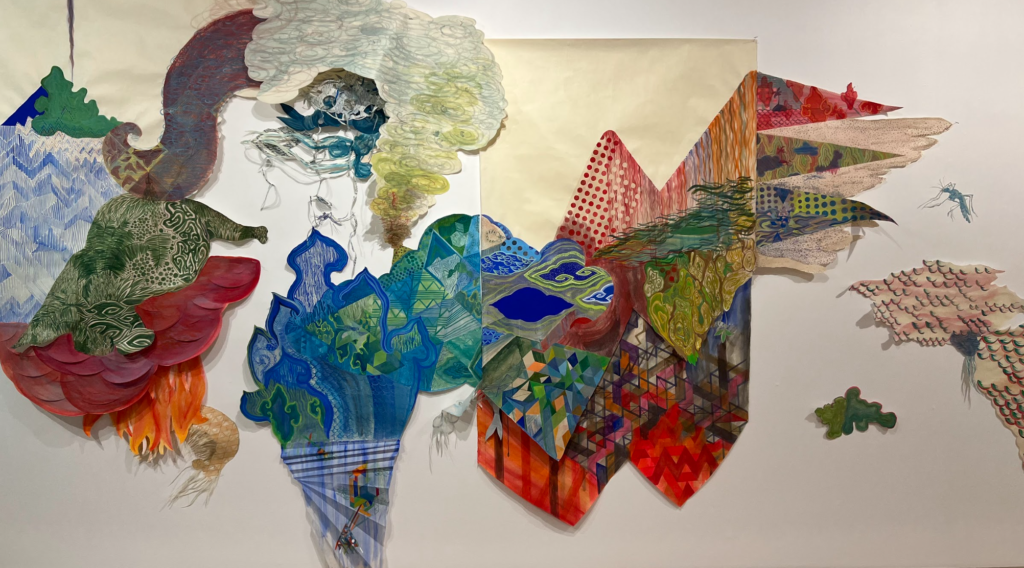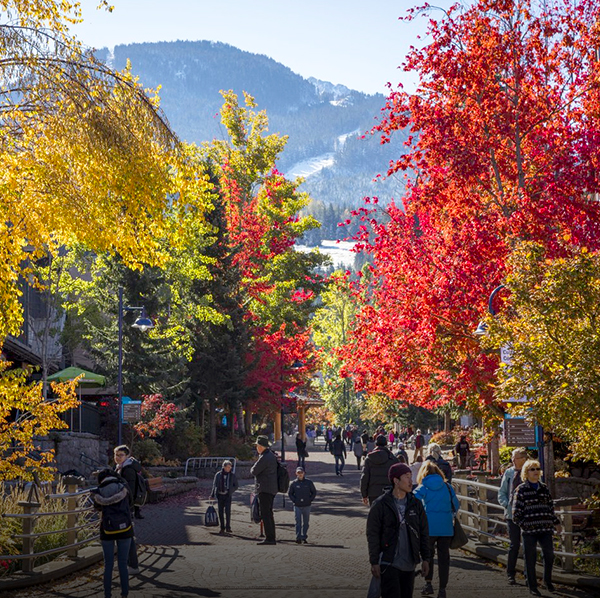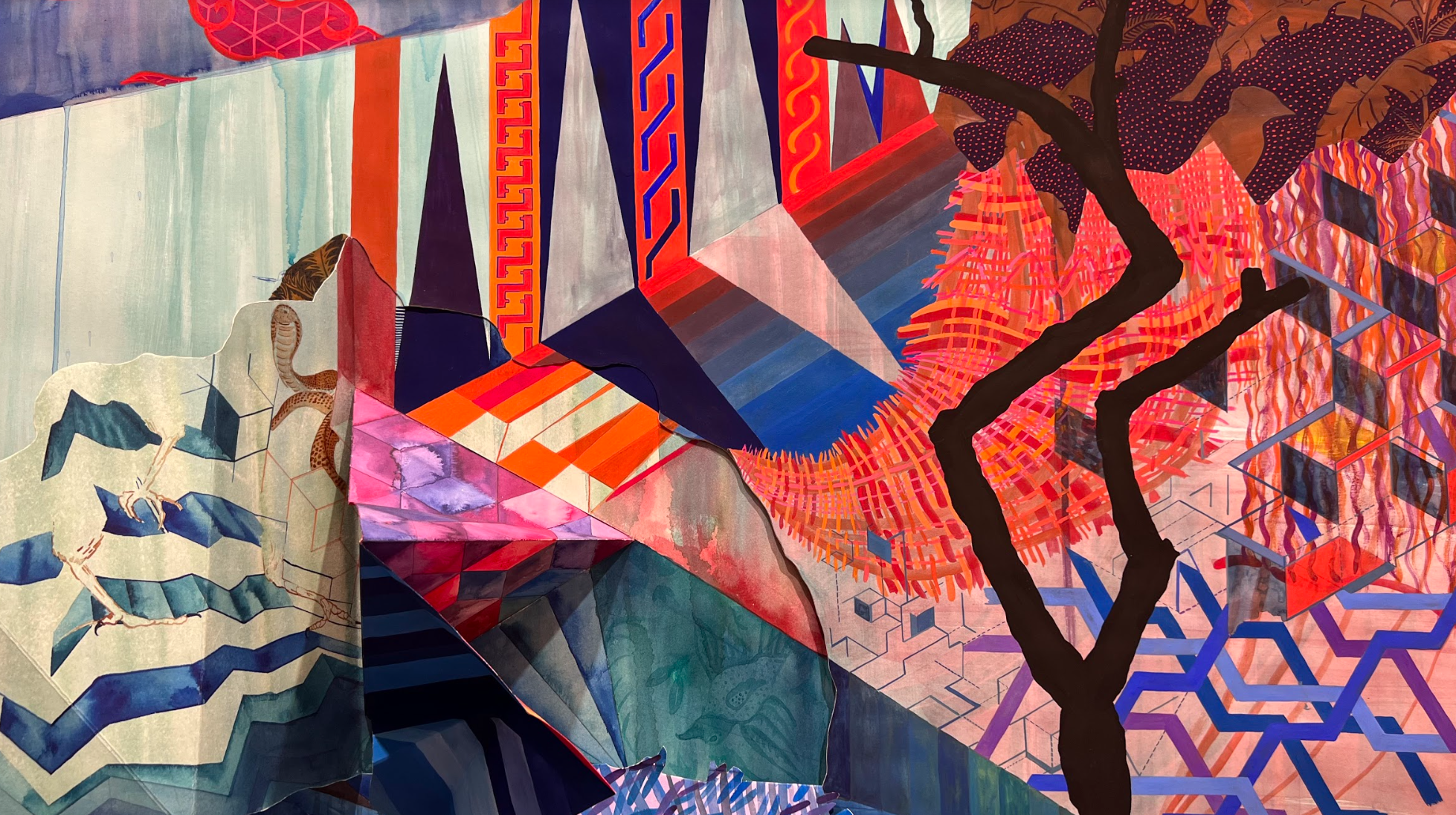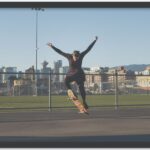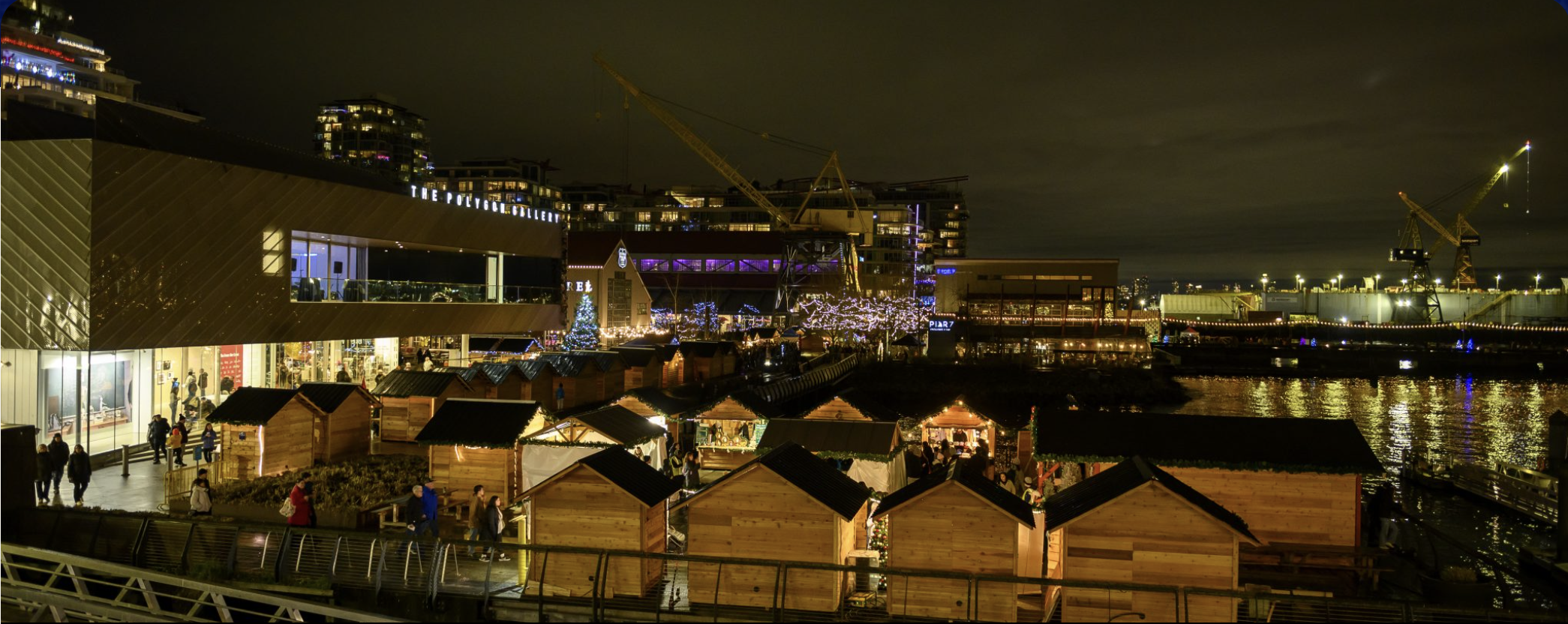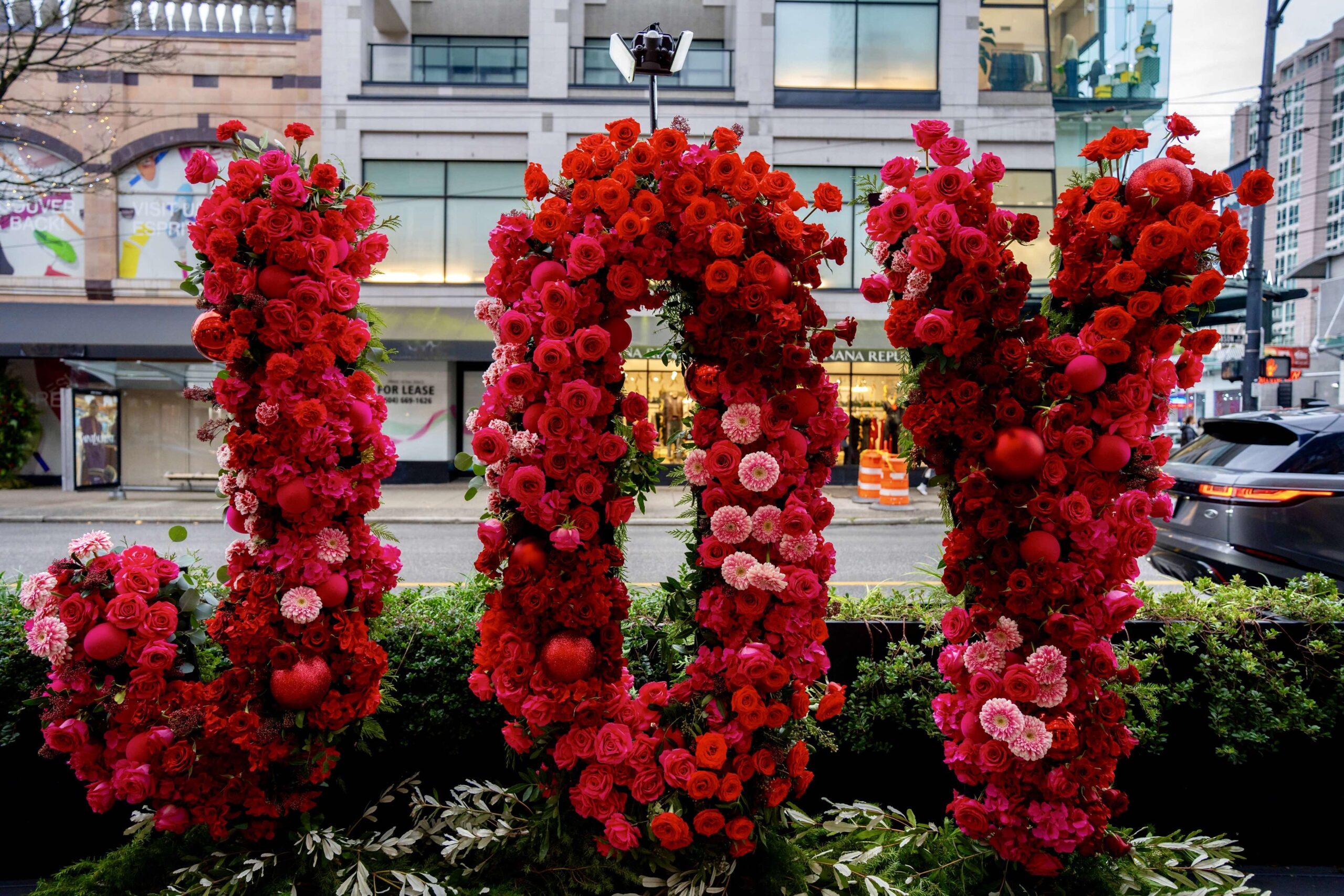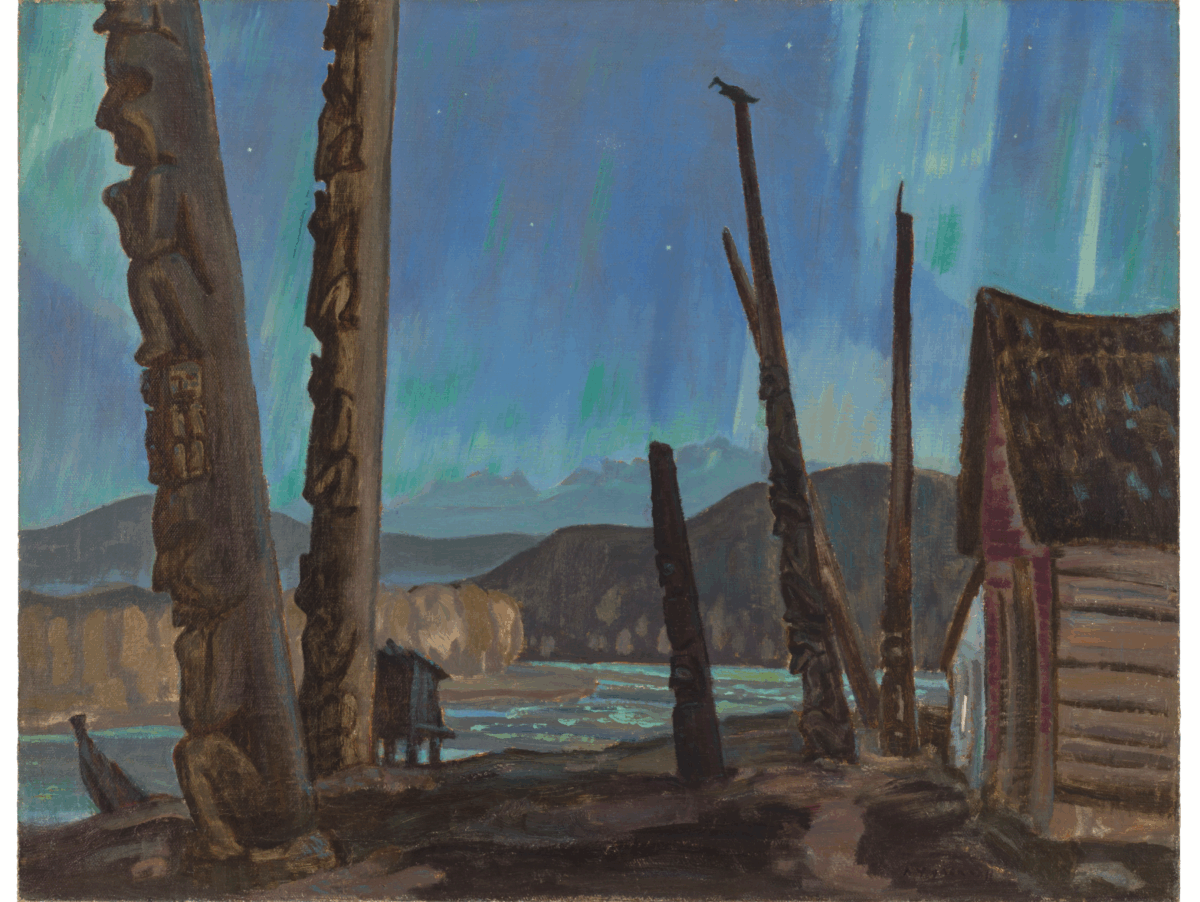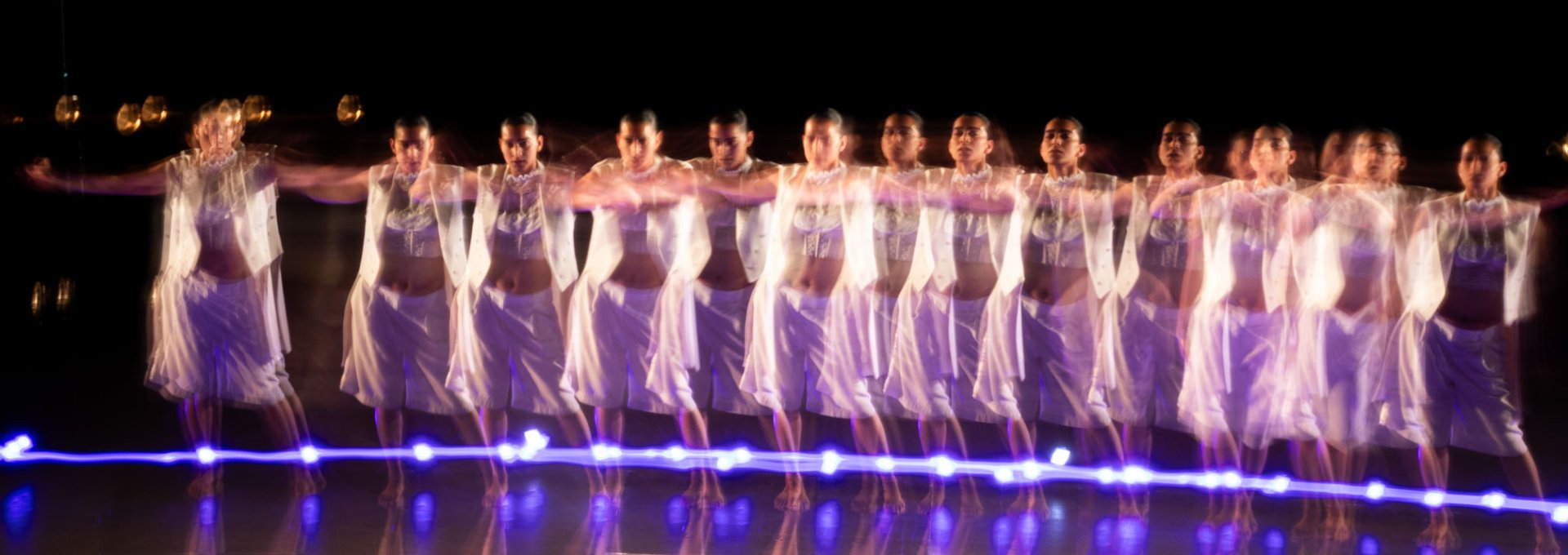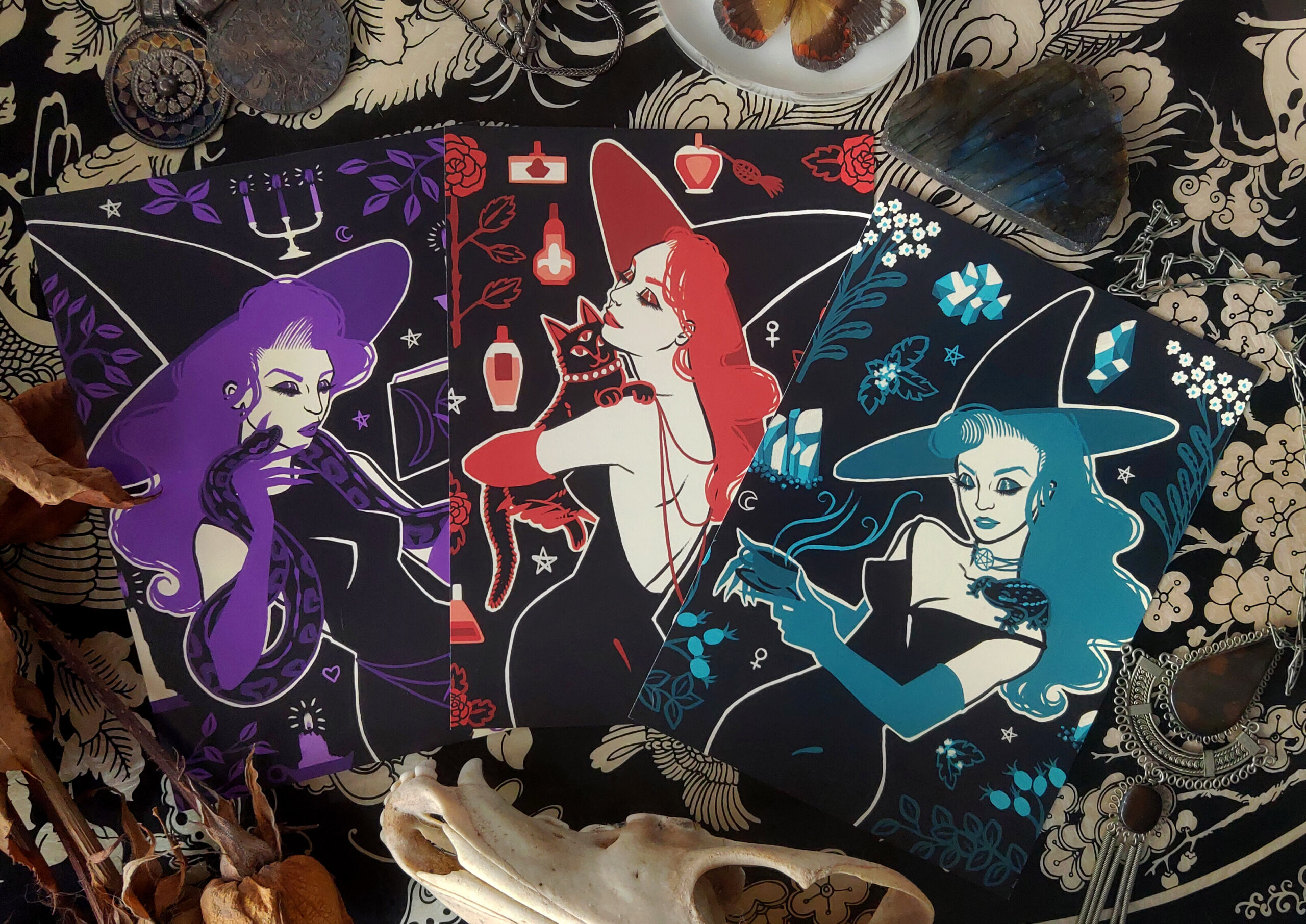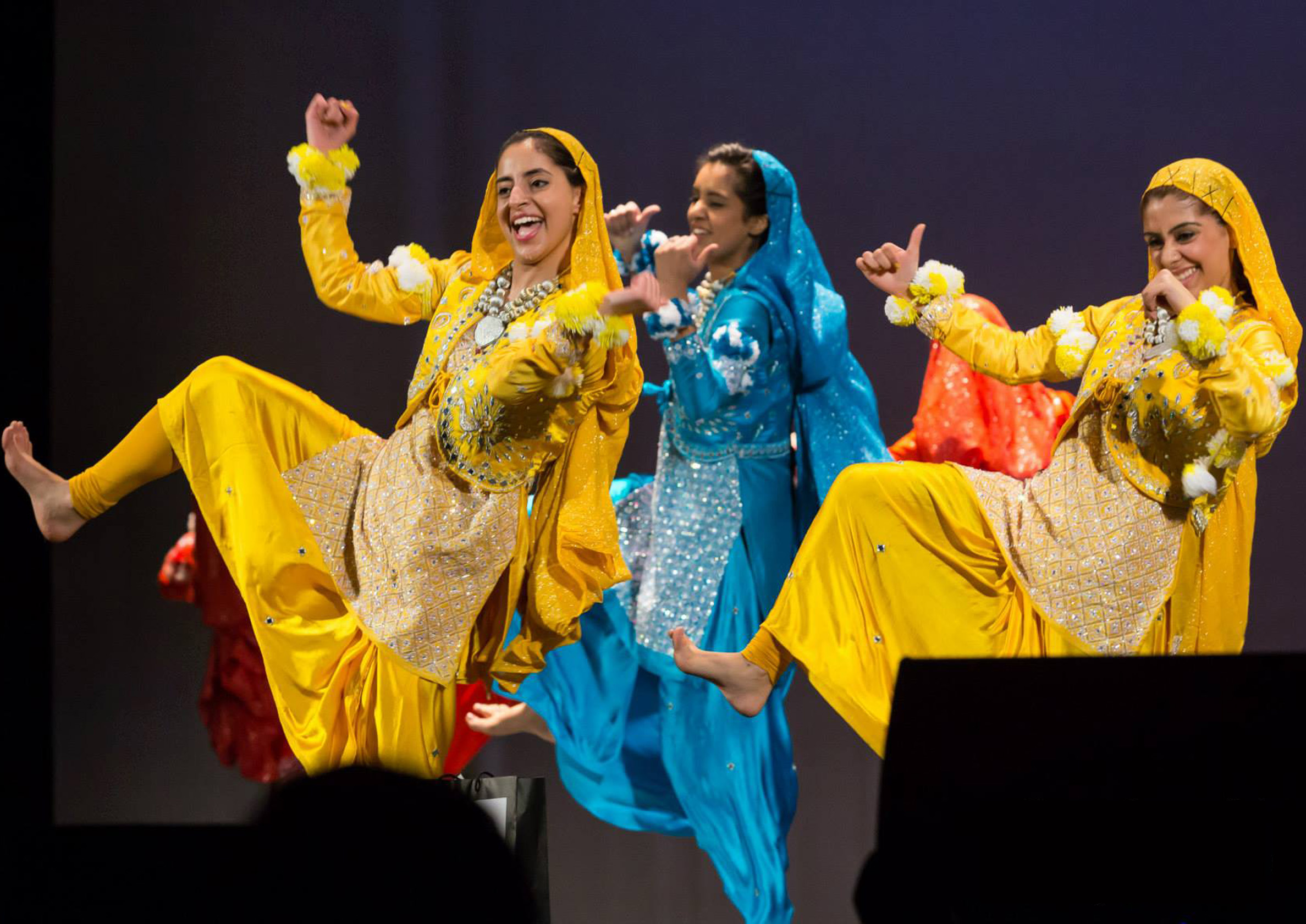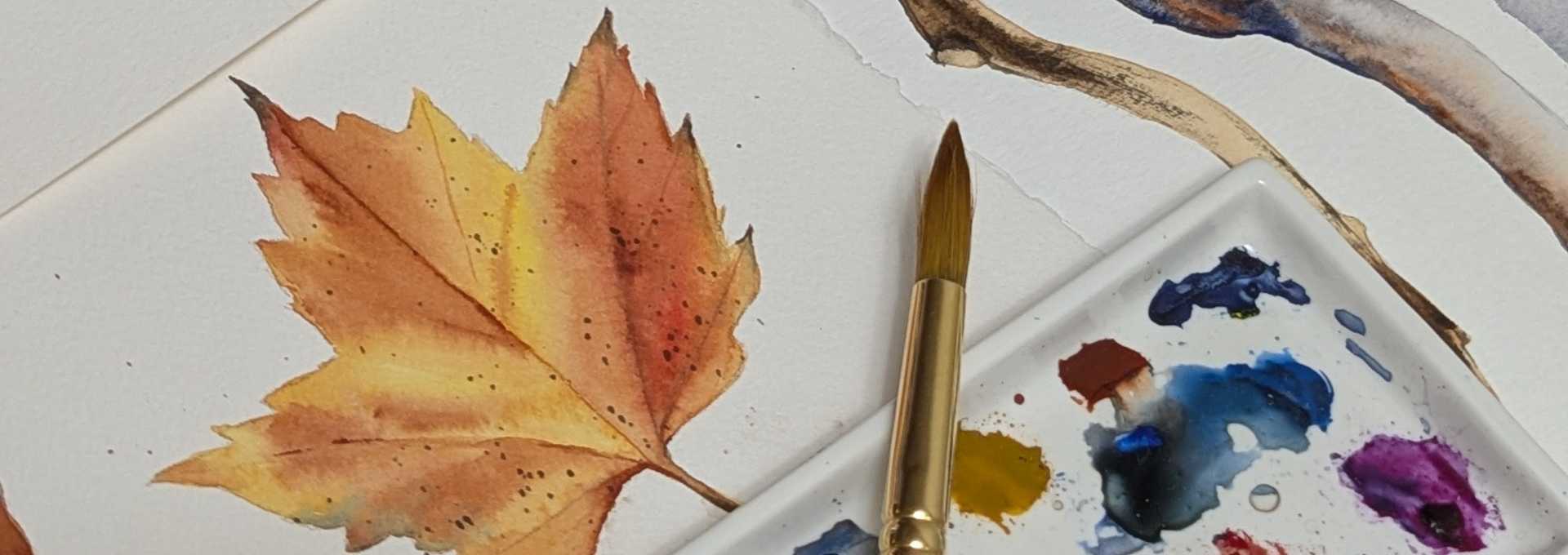Written by Natasha Ponda
Throughout her work, Vancouver-based artist Diyan Achjadi visually documents ideas and stories of ecological crossover. With illustrations steeped in mythos and geometric painted prints, she often explores the effects of human activity on environmental changes and responses. Her current show at the Burnaby Art Gallery, Carried Through the Water, is similarly a crossover between multicultural recollections and varying art mediums (text, image, and animation). The show creates a complex dialogue of memory, existence, action, and outcome.
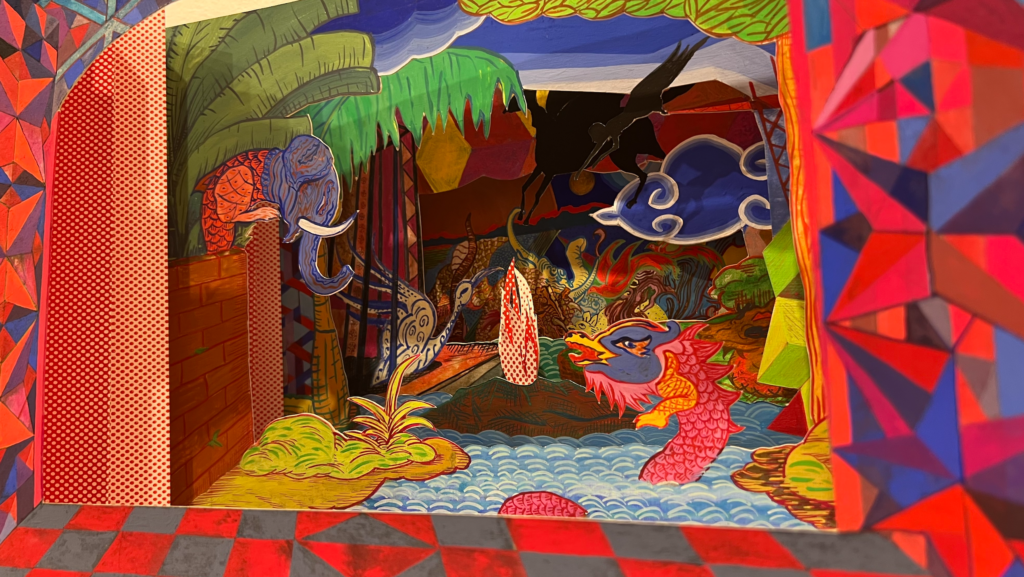
In her painted pieces, the portrayal of mythological creatures expresses a commentary on our environmental impact.
While attributing these divine animals to nature, the narratives she constructs using these symbols still convey a sense of fragility and vulnerability to these macro systems that animals, including ourselves, rely on. Within the expanse of these mythological cutouts, little animals hang helplessly within the turmoil of shifting shapes and colours. The expressions of fear and uncertainty are deliberately outlined on their faces with black paint.
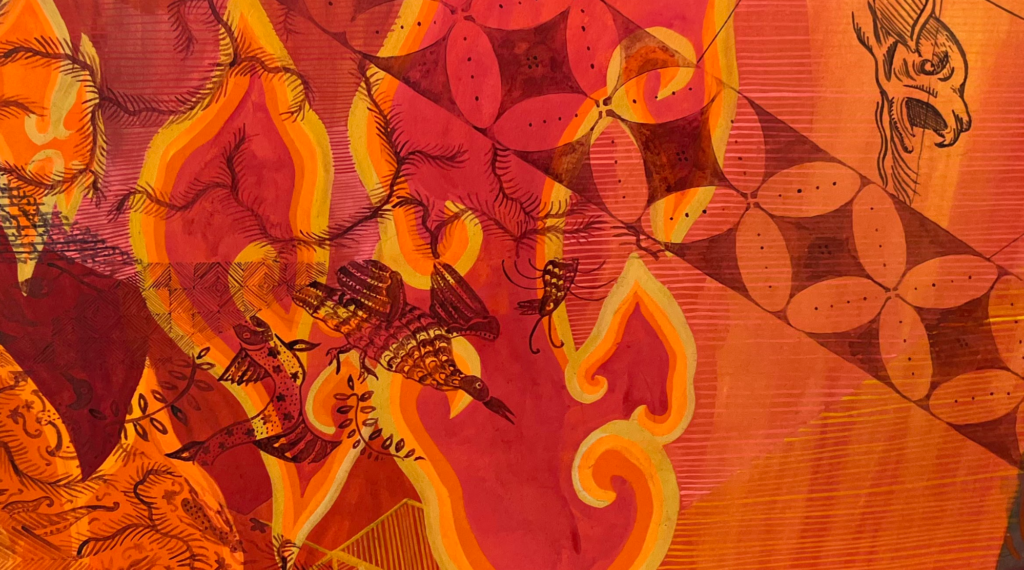
At first glance, the surrounding small creatures in her drawings, with their bare-bones outlines, stay camouflaged. Only acknowledged upon closer inspection do you notice them. These birds, fish, and insects all seemingly share a similar fate in the reflections she makes about the animals from her childhood garden in Jakarta.
“People with packs full of insecticide would come by the house, and we’d close all the windows, and they’d spray the whole yard to kill the mosquito wrigglers. White clouds of stinky chemical smoke would be everywhere. We would sit inside, and they’d be outside, and in an hour… we’d open the windows again. Once the smoke cleared, you couldn’t tell that anything had happened”.
Alongside these words, the presence of smaller animals drawn within large works highlights the more invisible eradication of smaller, non-human inhabitants.
This is a snippet from one of three stories Achjadi writes in the show’s accompanying booklet, along with an additional poetic piece by Ashok Mathur, which helps to contextualize the visuals in a relatable way. Achjadi’s recollections provide personal experiences and smaller-scale insight into the more macro themes her paper constructs communicate. Having the book in hand, you can read, walk, and reflect upon the meta-narratives hanging on the gallery walls.
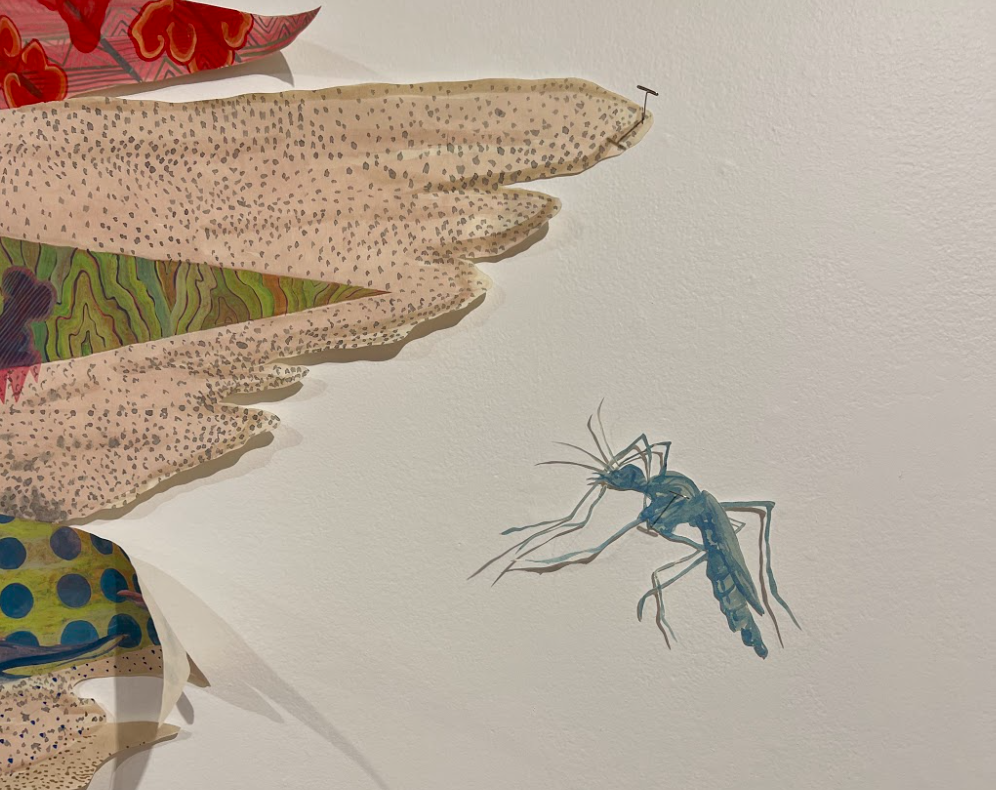
Throughout the show, Achjadi’s work lingers on an ambivalent tension between human existence, the land, and the creatures that occupy it. As humans, we fear the diseases we contract due to the nature of organic existence. She communicates this through her recollection of dengue and the large cutouts of mosquitoes pinned mid-flight upon the walls. This sense of fear is juxtaposed against a lighter sentiment of appreciation for the trees in her written story. Each one gives shade in the sweltering heat, or provides a shield against harsh weather. The same trees that may protect us in an urban landscape as we flee heavy rains and seek shelter.
This combination of images and text poses difficult questions in my mind: should we try to eradicate species that unintentionally cause us harm? Further, is it acceptable to do so through chemicals or actions that poison or destroy other flora and fauna? As I sat in the upstairs room of the gallery, bathed in the light and sound of her stop motion watercolour animation, I came away with an appreciation of the silent, tireless work of nature, providing nourishment to its creatures. A reminder to care for the living organisms who make existence a possibility for us in the first place.
You can absorb the colourful beauty and geometric complexity of Achjadi’s works until September 18th 2022.
For more info about this show and future exhibitions, visit:
www.burnaby.ca/recreation-and-arts/arts-and-culture-facilities/burnaby-art-gallery
Take the Millenium Line Skytrain to Sperling-Burnaby Lake Station, then take the #144 Metrotown bus to Rowan Ave. A 2 minute walk after that!
